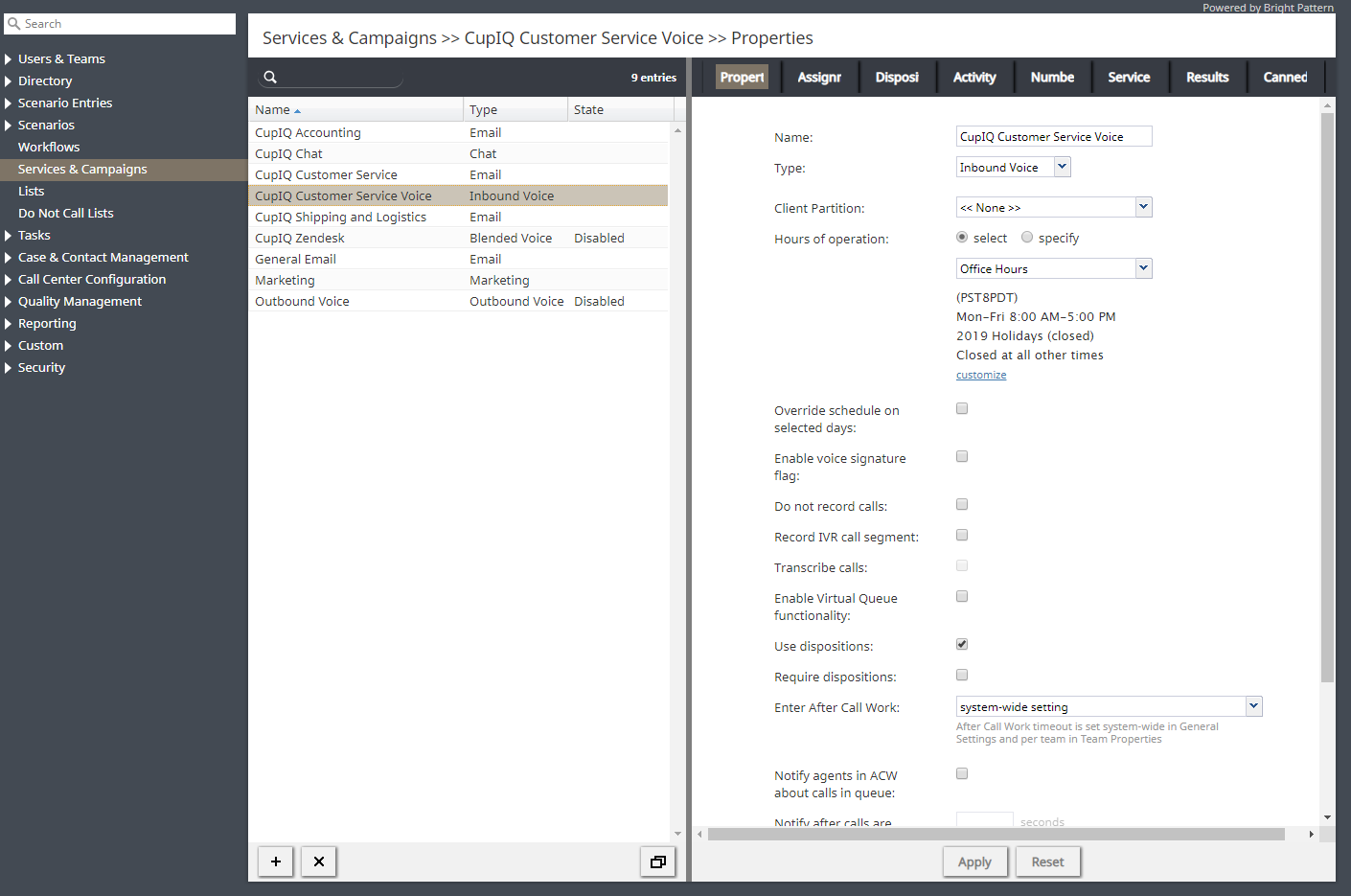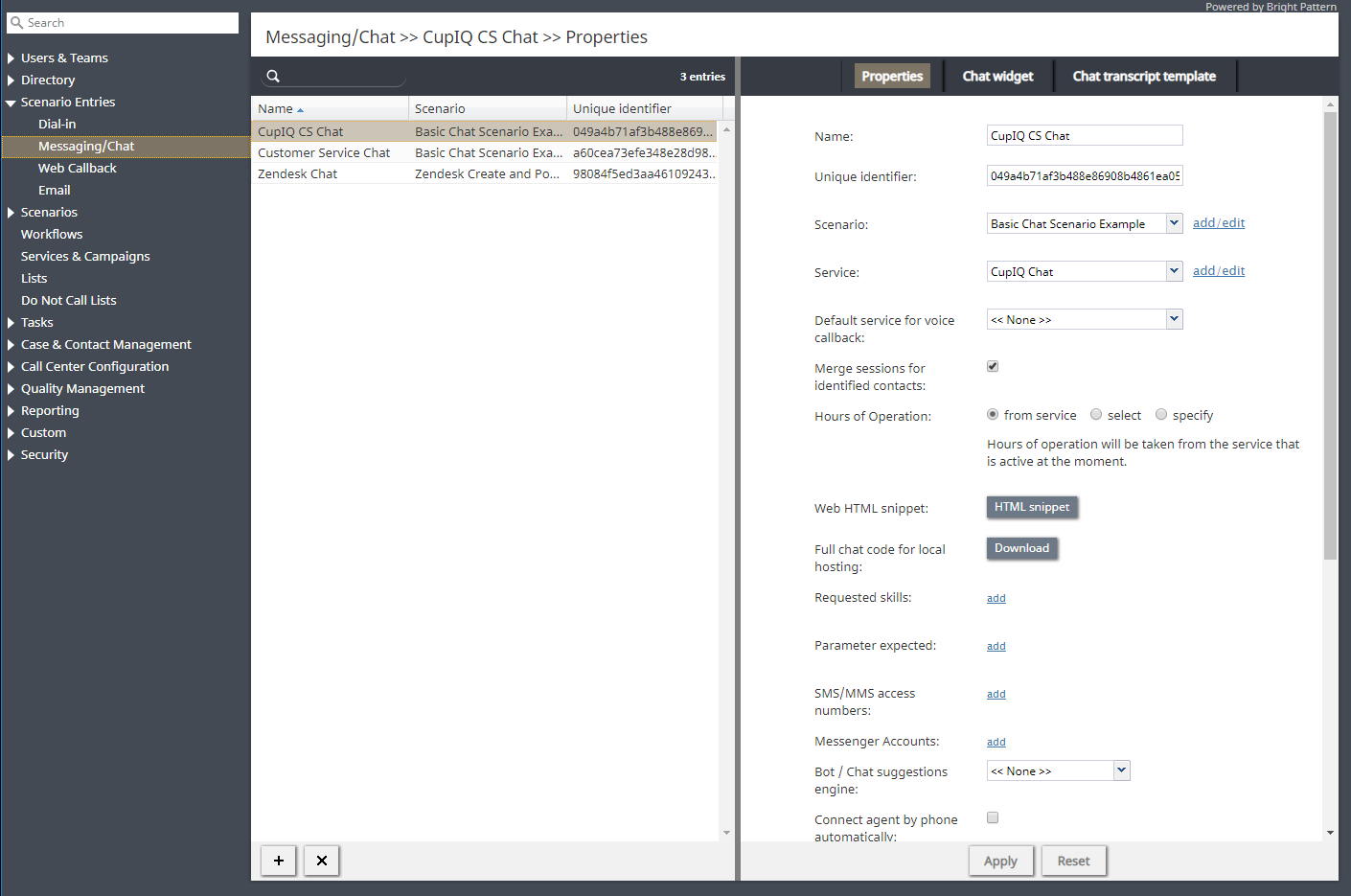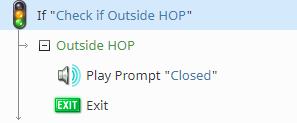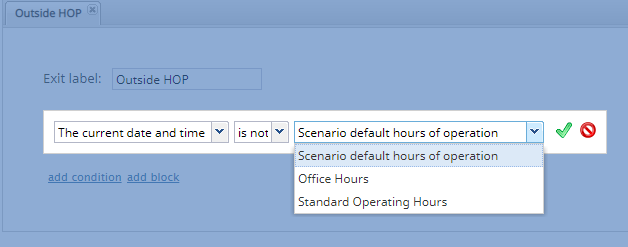<translate>= Understanding Hours of Operation = Setting hours of operation lets you control what happens to interactions when you are not staffed. Without defining hours of operation you cannot decide how your interactions are routed while you are closed.
In the Contact Center Administrator, you may configure hours of operation in the following ways:
- Globally for use by your entire contact center
- Per Service
- By Scenario
- Assigning them to the Access number
- Setting them as a parameter for the access number
| Setting a parameter for an access number requires using the condition scenario variable HOP verses the condition current date and time. | ||
No matter how you choose to set up hours of operation, you must include them in your scenario design.
Configure Call Center Calendars
Before configuring hours of operation, you may need to define days of operation, known as calendars. There are two ways to create a calendar. Click the + sign to add a new one, or click Clone to copy an existing one.
To create a new calendar:
- In the Administrator application, go to Call Center Configuration, Calendars.
- Click + to add a new calendar.
- Type a name for the calendar in the Name field
- Click Add in the Days field.
- Select the recurrence from the first drop down. For example, you may choose weekly or monthly to create your calendar.
- Select the day of the week from the second drop down.
- Click Apply after adding your days.
| Repeat this step for every day of the week to be included in your calendar. | ||
To clone an existing calendar:
- Select Clone in the Calendar Properties pane.
- Edit the name.
- Click Apply.
Configure Global Hours of Operation
After creating your calendars, you can define global hours of operation for your contact center. To define global hours of operation:
- Go to Call Center Configuration, Hours of Operation.
- Type a name for your hours of operation. For example, Standard Business Hours.
- Click add. Select your previously defined calendar from the drop down menu.
- Select the closed checkbox to stipulate the hours that you are closed, or leave it cleared and type the hours that you are open into the time range fields. You can use standard time or military time.
- Select the time zone from the drop down below the time range fields.
- Click the green check mark to save your hours of operation.
| Repeat this step with additional calendars as needed. | ||
Services & Campaigns
After defining a global HOP entry, you will need to assign it to a service or campaign. To do this, go to section Services & Campaigns > Properties tab. For each service or campaign, you can set unique hours of operation; this includes email services.
When configuring HOP for a specific service, you have two options: select and specify. Option select lets you select from your globally configured HOP. Should you desire, you have the ability to customize a selected global HOP entry; note that customized HOP override your global HOP. Option specify lets you create HOP from scratch, specifically for this service. To do this, click add, then configure the days and times you would like. Note that when specify is selected, the default option is Open 24/7.
Scenario Entries
If you would like, you can continue to set further HOP conditions per scenario entry. To do this, go to section Scenario Entries. HOP conditions may be applied to all scenario entry types except email. Note that any unique HOP defined here override previous ones associated with service or global HOP.
When configuring HOP for scenario entries, like in section Services & Campaigns, you have the option to select a new global set of hours or specify ones unique to this specific scenario entry. Additionally, there is the option from service, which takes the hours of operation from the services that are active at the moment. If you do not need any additional HOP conditions added to your scenario the from service option should be selected.
Scenarios
Section Scenarios is the final place where you may define HOP conditions; they are set using the If block in the Scenario Builder application. Note that when defined in a scenario, HOP conditions override all previous ones.
The most common use for invoking an HOP condition in an If block is to determine what happens to customers trying to reach your contact center outside your hours of operation, or an HOP check.
To configure an HOP check, add an If block to the top of your scenario and create a branch. On this branch, add a condition that uses the The current date and time option. From here, you may select a global HOP entry, and the "is not" option, the result being the scenario checks to see if the interaction is happening outside of the selected HOP entry. When configured correctly, your condition will look like this:
- The current date and time
- is not
- Selected HOP
Once the condition is configured, you then decide what to do with the interaction, such as sending a call to voicemail, a particularly skilled agent, routing the call to a third-party service, and so forth.
</translate>






